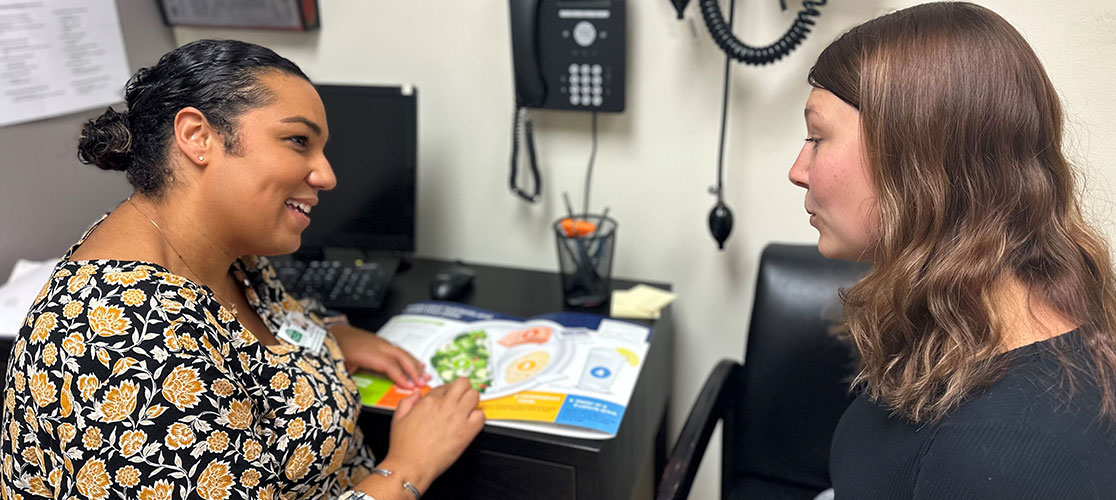
VT Food Security Roadmap: Objective G8
G8: Utilize the health care system to identify and alleviate food insecurity
G8: Utilize the health care system to identify and alleviate food insecurity

Vermonters without food security also report significantly poorer mental health, physical health, and general health. The health care system is extensive and many Vermonters intersect with some part of it.
From hospitals and primary care offices to treatment centers and long-term care facilities, operations vary depending on the needs of staff and, most importantly, the people they serve. By optimizing the health care system to identify and alleviate food insecurity, people living in Vermont will be provided with more of the resources they need to achieve and maintain their best health. Health care can be part of the overall approach to securing the food supply, supporting nutrition security, and developing a statewide culture of eating that honors health. This objective will benefit patients, health care providers, and farmers and, in many cases, will require governmental action.
Keep in Mind
Community Health Workers (CHWs), present in and familiar with the needs of Vermont’s communities, play a pivotal role in connecting people with food security resources.
Strategies marked with a ![]() are high-priority
are high-priority
Collaborate with insurance carriers to ensure that visits to the grocery store, farmers markets, and other food distribution locations are reliably and consistently classified as health-related trips.
Invest in frameworks for the provision of produce prescriptions, with food sourced from both local farmers and conventional retail locations. Expand current programs and establish new ones in areas without programs, including southern Vermont and the Northeast Kingdom.
Expand and invest in medically tailored food supports, such as medically tailored meals, in collaboration with insurance carriers. These are increasingly popular interventions nationwide; optimize by ensuring meal delivery and at-home care is central to their structure, particularly in rural and high-poverty areas.
Expand universal screening for food security status within the health care system, using a validated screening tool. Pair with subsequent action for those identifying as food insecure. Such screening could be a source of data related to food security progress in Vermont.
Invest in Community Health Workers (CHWs), who are well situated to understand the needs of distinct populations. CHWs already identify food insecure individuals, assist with paperwork and enrollment in food assistance programs, and connect individuals with culturally responsive food.
“Health care systems need to treat food security and nutrition equity as paramount to preventive care.”
“How to make the healthy choice the default choice; making eating healthy easy—the burden of a healthy diet should not fall on caretakers.”
“No one should go hungry or not have access to healthy food options.”
“If you think of food as vital to someone’s health, then it’s within this realm of access to health and health-related services.”